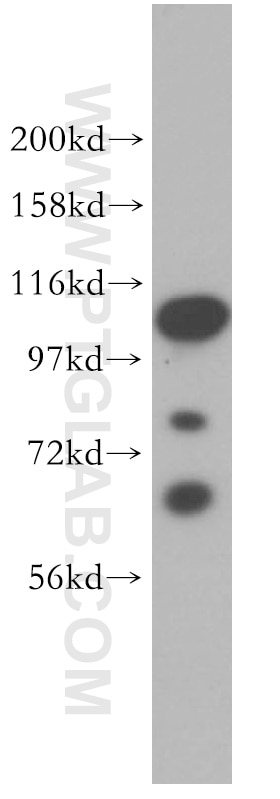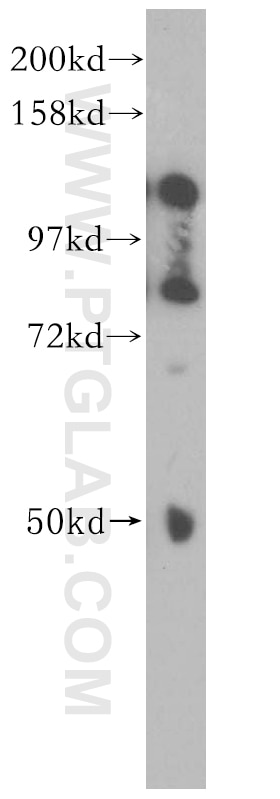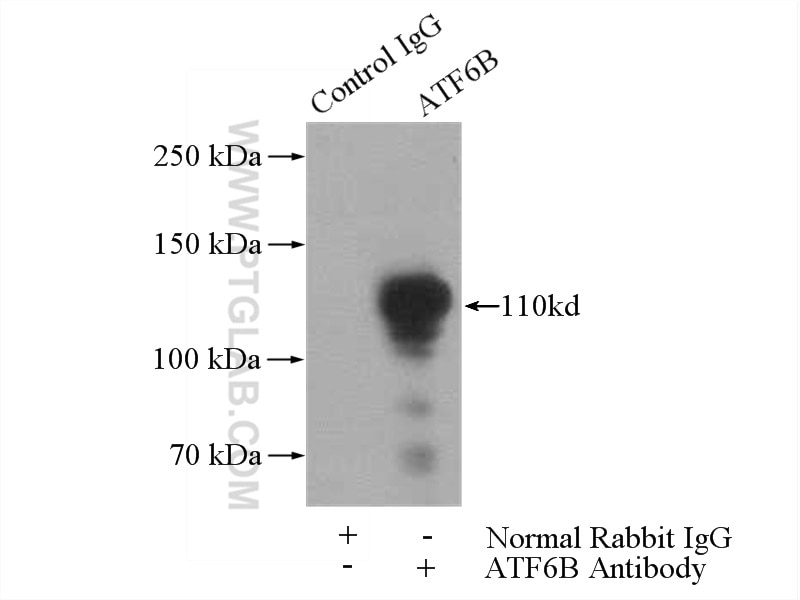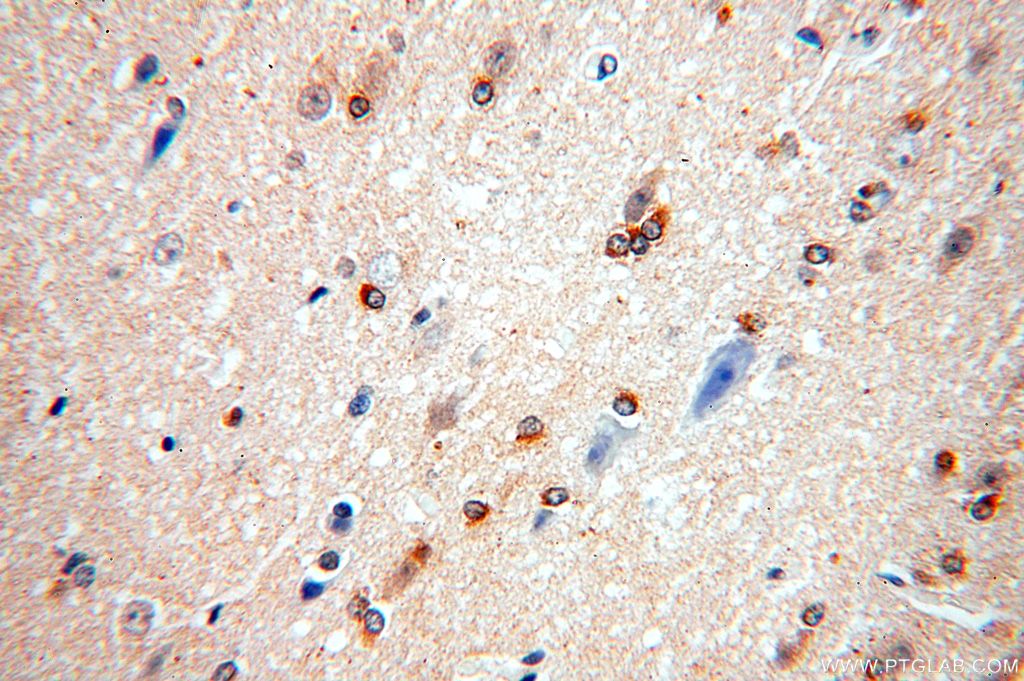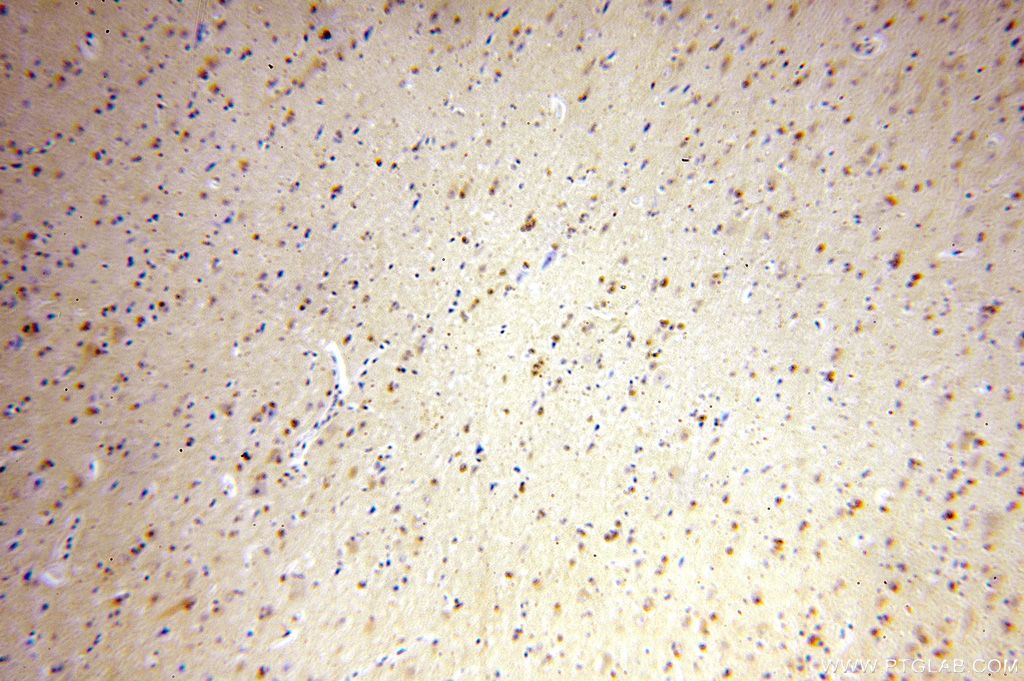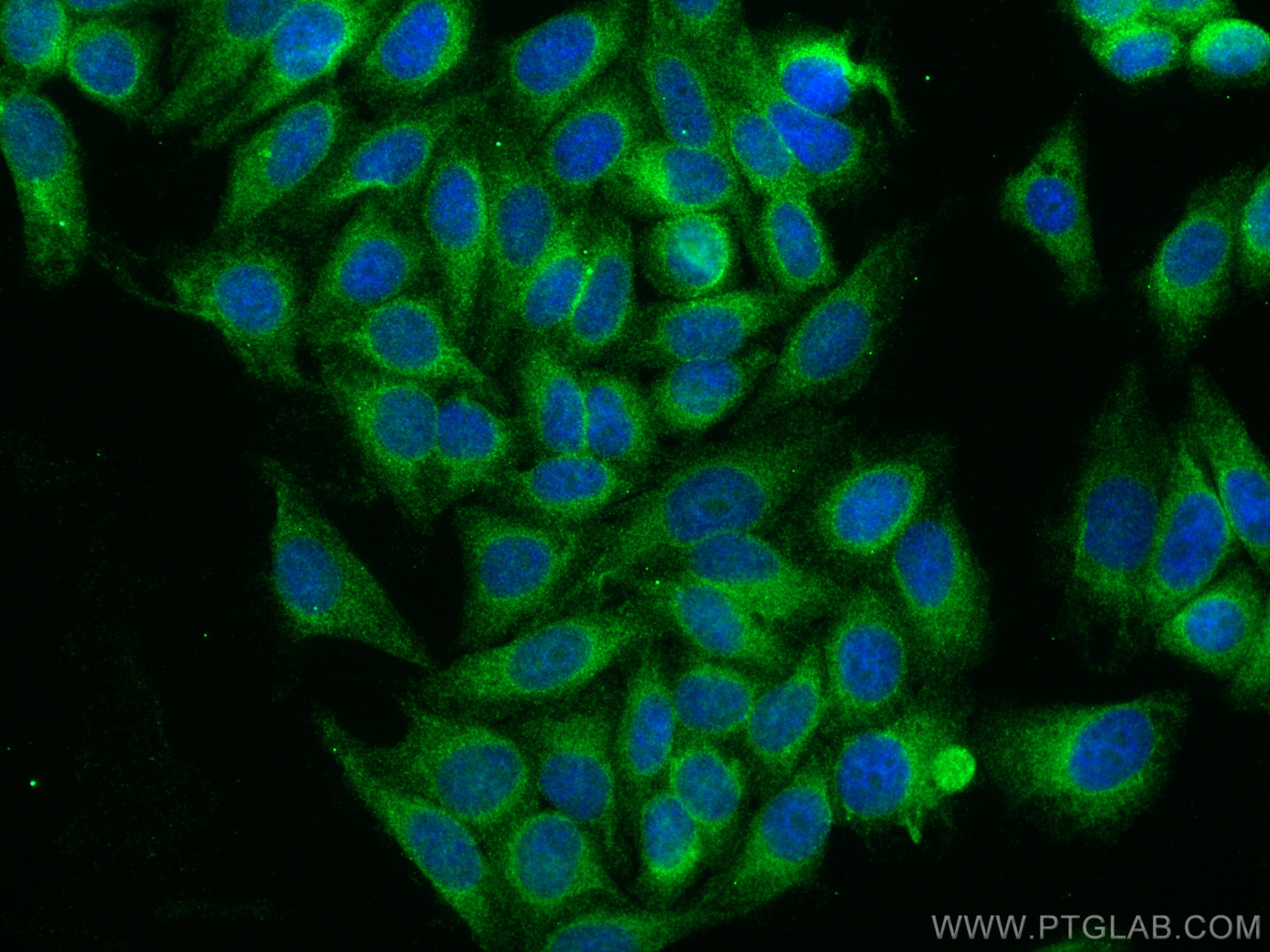Validation Data Gallery
Tested Applications
| Positive WB detected in | Jurkat cells, human testis tissue |
| Positive IP detected in | Jurkat cells |
| Positive IHC detected in | human brain tissue Note: suggested antigen retrieval with TE buffer pH 9.0; (*) Alternatively, antigen retrieval may be performed with citrate buffer pH 6.0 |
| Positive IF/ICC detected in | HepG2 cells |
Recommended dilution
| Application | Dilution |
|---|---|
| Western Blot (WB) | WB : 1:1000-1:4000 |
| Immunoprecipitation (IP) | IP : 0.5-4.0 ug for 1.0-3.0 mg of total protein lysate |
| Immunohistochemistry (IHC) | IHC : 1:20-1:200 |
| Immunofluorescence (IF)/ICC | IF/ICC : 1:50-1:500 |
| It is recommended that this reagent should be titrated in each testing system to obtain optimal results. | |
| Sample-dependent, Check data in validation data gallery. | |
Published Applications
| KD/KO | See 1 publications below |
| WB | See 15 publications below |
| IHC | See 1 publications below |
| IF | See 3 publications below |
Product Information
15794-1-AP targets ATF6B in WB, IHC, IF/ICC, IP, ELISA applications and shows reactivity with human, mouse, rat samples.
| Tested Reactivity | human, mouse, rat |
| Cited Reactivity | human, mouse, rat |
| Host / Isotype | Rabbit / IgG |
| Class | Polyclonal |
| Type | Antibody |
| Immunogen |
CatNo: Ag8502 Product name: Recombinant human ATF6B protein Source: e coli.-derived, PGEX-4T Tag: GST Domain: 1-318 aa of BC008394 Sequence: MAELMLLSEIADPTRFFTDNLLSPEDWGLQNSTLYSGLDEVAEEQTQLFRCPEQDVPFDGSSLDVGMDVSPSEPPWELLPIFPDLQVKSEPSSPCSSSSLSSESSRLSTEPSSEALGVGEVLHVKTESLAPPLCLLGDDPTSSFETVQINVIPTSDDSSDVQTKIEPVSPCSSVNSEASLLSADSSSQAFIGEEVLEVKTESLSPSGCLLWDVPAPSLGAVQISMGPSLDGSSGKALPTRKPPLQPKPVVLTTVPMPSRAVSPSTTVLLQSLVQPPPGTEEGEKGRAWWLTPVIPALWEAEAGESPEVRSLRPAWPTW 相同性解析による交差性が予測される生物種 |
| Full Name | activating transcription factor 6 beta |
| Calculated molecular weight | 703 aa, 77 kDa |
| Observed molecular weight | 110 kDa |
| GenBank accession number | BC008394 |
| Gene Symbol | ATF6B |
| Gene ID (NCBI) | 1388 |
| RRID | AB_2058912 |
| Conjugate | Unconjugated |
| Form | |
| Form | Liquid |
| Purification Method | Antigen affinity purification |
| UNIPROT ID | Q99941 |
| Storage Buffer | PBS with 0.02% sodium azide and 50% glycerol{{ptg:BufferTemp}}7.3 |
| Storage Conditions | Store at -20°C. Stable for one year after shipment. Aliquoting is unnecessary for -20oC storage. |
Background Information
The endoplasmic reticulum (ER)-transmembrane proteins, ATF6 alpha (ATF6) and ATF6 beta (ATF6B), are cleaved during the ER stress response (ERSR). The resulting N-terminal fragments of both ATF6 isoforms, which have conserved basic leucine-zipper and DNA binding domains but divergent transcriptional activation domains, translocate to the nucleus where they bind to ER stress-response elements (ERSE) in ERSR, such as Bip/GRP78. This antibody could recognize ATF6 beta (110kd) and its cleaved forms(60,80kd )(PMID: 11256944)
Protocols
| Product Specific Protocols | |
|---|---|
| IF protocol for ATF6B antibody 15794-1-AP | Download protocol |
| IHC protocol for ATF6B antibody 15794-1-AP | Download protocol |
| IP protocol for ATF6B antibody 15794-1-AP | Download protocol |
| WB protocol for ATF6B antibody 15794-1-AP | Download protocol |
| Standard Protocols | |
|---|---|
| Click here to view our Standard Protocols |
Publications
| Species | Application | Title |
|---|---|---|
Cancer Lett LIMK1 m6A-RNA methylation recognized by YTHDC2 induces 5-FU chemoresistance in colorectal cancer via endoplasmic reticulum stress and stress granule formation | ||
Int J Mol Sci Proteomic Analysis of Marinesco-Sjogren Syndrome Fibroblasts Indicates Pro-Survival Metabolic Adaptation to SIL1 Loss. | ||
Front Cell Dev Biol miR-1260b inhibits periodontal bone loss by targeting ATF6β mediated regulation of ER stress
| ||
Front Cell Dev Biol Mfn2 Regulates High Glucose-Induced MAMs Dysfunction and Apoptosis in Podocytes via PERK Pathway | ||
Arch Toxicol Correction to: Protective effects of dioscin against alcohol‑induced liver injury. |

